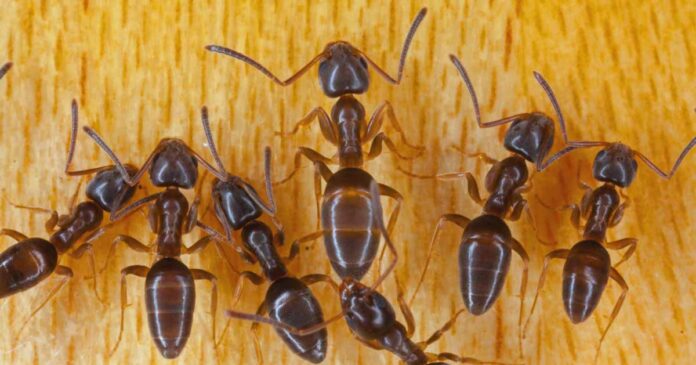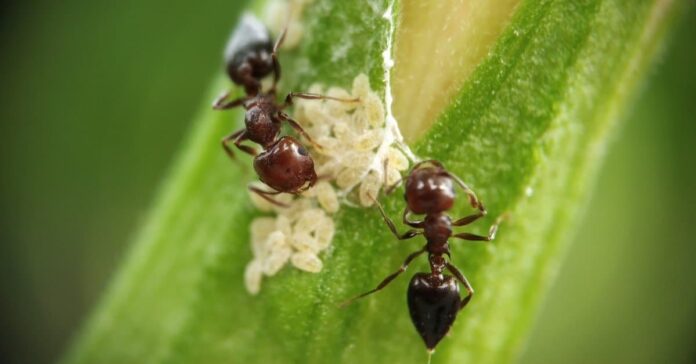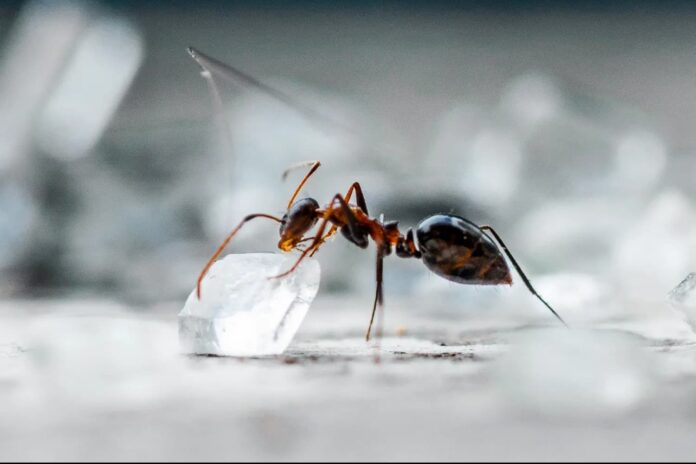Odorous house ant belongs to the Tapinoma Sessile, the small ant species that are smelly when crushed. It also goes by many other names such as coconut ant, odorous house ant, sugar ant, and stink ant. People describe the smell of the ants differently, and those are the pungent odor of blue cheese, a rotting coconut, or turpentine. Hence, the nicknames. Smelly ants are varied in color, usually from brown to black. Considered as pests, we are going to discuss many things including how to get rid of them as well. Let’s start, shall we?
1Behavior

Foragers are very good at foraging for food, and they will share the food they find with other ants. So their daily task is to collect food around the nest area and bring it back to the colony. More than that, they don’t go further and further to find food. When there is a reliable food source, these ants will move their colony closer to the food source instead. Smart ants know how to reduce transportation time.
Not different from other ant species, odorous house ants also live in colonies from a few hundreds up to tens of thousands of individuals. The bigger the colony, the more queens there are. Also, it is common for a colony to have multiple nests so having multiple queens is nothing new. No matter many nests there are, the entire colony will spend winter together in just one nest. When food resources are more abundant in spring and summer, they will form multiple nests again. The thing to know is that once they establish their colony in your household, it will be very difficult to remove them.
Besides being smelly, these ants are very tough cookies. Injured workers still continue living and working despite the injuries. Even more fascinating, queens with crushed abdomens still lay eggs which is quite admirable. And in general, they are also highly tolerant to cold and heat as well.
2Feeding & Habitats

Just like the name suggests, they feed on sweet and sugary items like floral nectar, honeydew, and sugary foods. Along with that, they are also attracted to other sweets such as fruit juices and pastries. Their typical food sources are also crumbs, dairy products, fruits, vegetables, etc. This is why you will often see them trailing through your kitchen, especially after heavy rains. Odorous house ants enter homes to escape floods in their nest and to find food.
Oh you can find these ants in a wide range of habitats, especially within households. Normally, they forage for honeydew that aphids and scale insects produce so they stay and guard where those insects stay. Indoors, they will establish their colony near heat sources in insulation. It could be anywhere such as attics, beneath floorboards, near heaters, in walls, window frames, and other hidden areas. Outdoors, they usually colonize in soil under debris, mulch, piling dirt, stones, and wood. They are also attracted to moisture-rich locations so you will also find them near gardens, ponds, and streams.
Why The Name?
Smelly ants usually travel in lines, but they will run around erratically when alarmed or disturbed. As they run, they will release their order as a part of defense mechanism. When crushed, they also leave an unpleasant smell that gives them the reputation and nickname of stink ant.
How To Get Rid Of Odorous House Ants
Though quite challenging once they established their colonies, smelly ants are vulnerable to most ant-killers. You have to take action on time or the population will become larger which can lead to an infestation. The best way is to contact professionals for removal when you notice an infestation. If it is not too serious, below are some of the effective ways to get rid of odorous house ants:
- Bait: Place the bait where they can find so that they can feed on it and carry it back to the nest. Once everyone in the colony feeds, the insecticide will kill the queen and other colony members for good.
- Caulk: If you spot cracks near door sills, vents, or window sills, caulk those areas. Do the same with locations near bathtubs, underneath the sinks, and wall crevices.
- Clean: Make sure to clean your countertops and vacuum the house daily to remove clutter and food debris.
- Nest: If you find the nest, treat it properly with insecticide. However, it could be the case that there are multiple colonies so you might see them coming back.
Related Post: Things You Don’t Know About Fish Hook Ants




